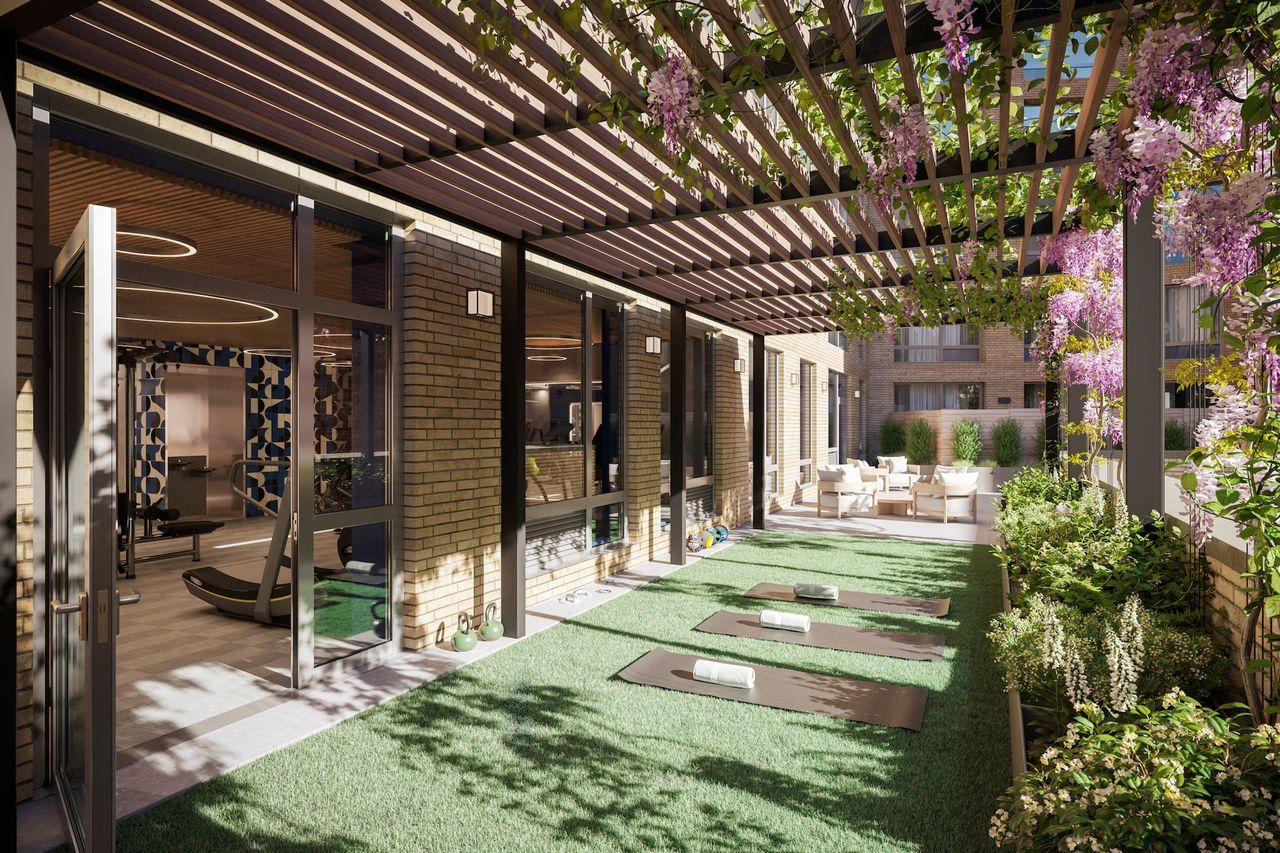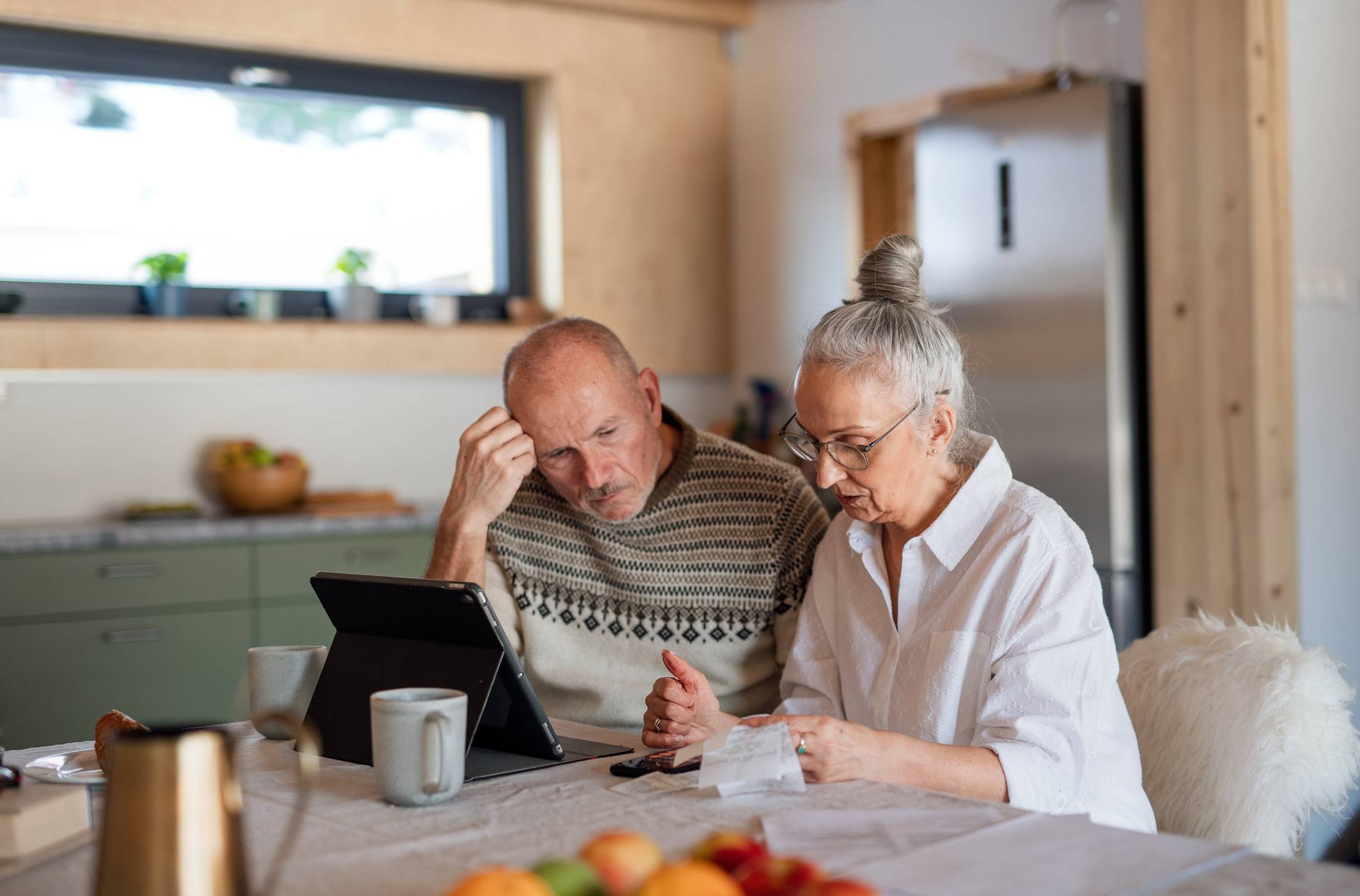In a Luxury-Home Market Obsessed With Wellness, the ‘Shaman Is Another Level Altogether’
Luxury concierges, expected to go to the ends of the Earth to satisfy residents, may have to tread even further in their latest role.
A new crop of luxury buildings looking for more creative ways to stand out and attract wellness-focused buyers is going beyond, the flashy fitness centres and spas to add meditation gardens, cold plunges or ice baths—and, yes, spiritual concierges, who connect residents with healers, therapists and a bevy of other experts to help with mental and emotional health.
Take the Maverick Chelsea in New York as an example. The building, in Manhattan’s Chelsea neighbourhood, saw residents start to move in November and is debuting three floors of wellness amenities this month such as a 60-foot-long indoor mosaic tiled pool with cabana seating. But the highlight may be the on-call spiritual concierge who residents can tap through the building’s programming partner LIVunLtd.
Maverick Chelsea’s head of sales Alex Lundqvist said that the concierge can connect homeowners with top aura readers, crystal and reiki healers and meditation teachers.
“We want to provide multiple ways to help people who are seeking spiritual realignment or guidance,” he said. “It’s something that’s increasingly valued today.”
One&Only Mandarina Private Homes, in Mexico’s Riviera Nayarit, also offers spiritual aid—a shaman to be exact who leads a traditional Mexican sage ceremony for interested buyers to bless their new homes.
Danielle Lepe, a San Francisco resident who works at Facebook, for one, bought a six-bedroom residence at the property with her husband and jumped at the chance. “I want any home of mine to have good energy, and I believed that a shaman could bring that in,” she said.
Ms. Lepe and her husband invited several friends to join them for the auspicious day, which she said saw clusters of hundreds of dragonflies circling the sky. The shaman saged the property inside and out, she said, and also blessed their expecting friend. “I am not at all a hippie-dippy type, and neither are our friends, but our spirits and souls felt nourished,” she said. “We felt an incredible sense of peace and that everything would be O.K.”
The development’s overall wellness amenities were a big reason why the property appealed to her and her husband, said Lepe. “It has the best breathwork and fitness classes that we fully take advantage of, but the shaman is another level altogether,” she said.
These more unusual perks of buying a residence in an upscale building are no surprise, according to Beth McGroarty, the research director for the Global Wellness Institute, a Miami-based nonprofit that promotes wellness. This is because wellness-centric residential real estate has been powered by the pandemic and is seeing a rapid rise. According to the group’s data, the market was valued at $148 billion in 2017. This year, it’s projected to jump to $460 billion, and by 2025, $580 billion.
“Wellness in real estate today means everything that you would find at a cutting-edge wellness centre,” Ms. McGroarty said. “It’s also a lot more holistic and emphasises emotional and spiritual health because buyers want help in this realm, especially after the pandemic.”
Mikaela Arroyo, the director of the New Home Trends Institute at California-headquartered John Burns Real Estate Consulting, agreed. “We surveyed homeowners and renters last November, and the majority responded that mental well-being was more paramount than physical health and their top priority when seeking a new property,” she said.
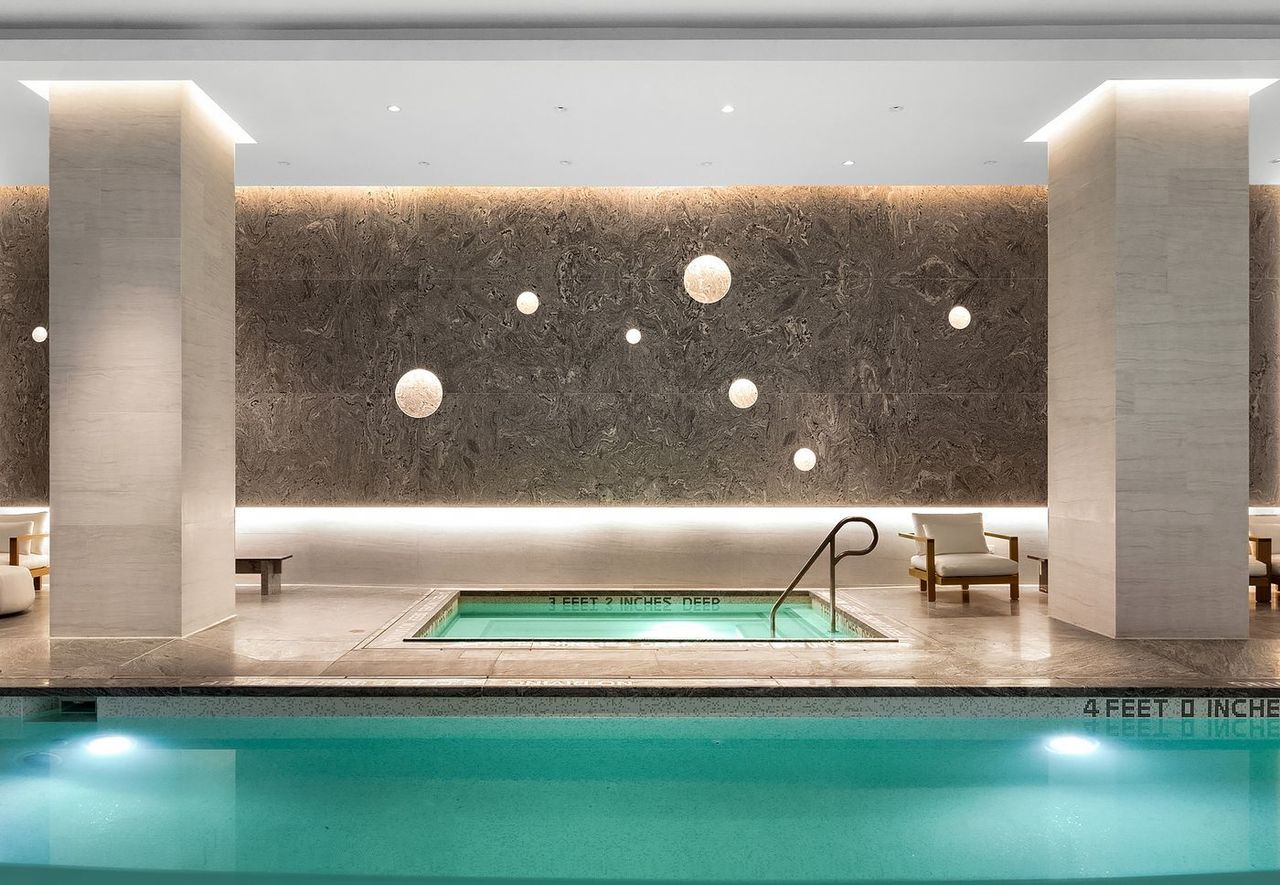
Some of the latest spa amenities also blur the line between physical and mental wellness.
A trendy amenity that’s designed to shock, all in the name of health of course, is the ice bath, where residents—as the name suggests—literally take a bath, if only for a second, in a tub filled with ice. Cold plunges are another twist on the concept and claim to have a similar effect. Cold therapy is touted as a cure all for everything from inflammation and sore muscles to improving mental health.
Fiction or fact aside, extreme temperature plunges and baths are catching on.
The Renaissance Residences Honolulu and Four Seasons Private Residences Lake Austin both have cold plunge baths. It’s also a feature at Brooklyn Point in downtown Brooklyn, according to Ryan Serhant, who is leading the sales and marketing for the building.
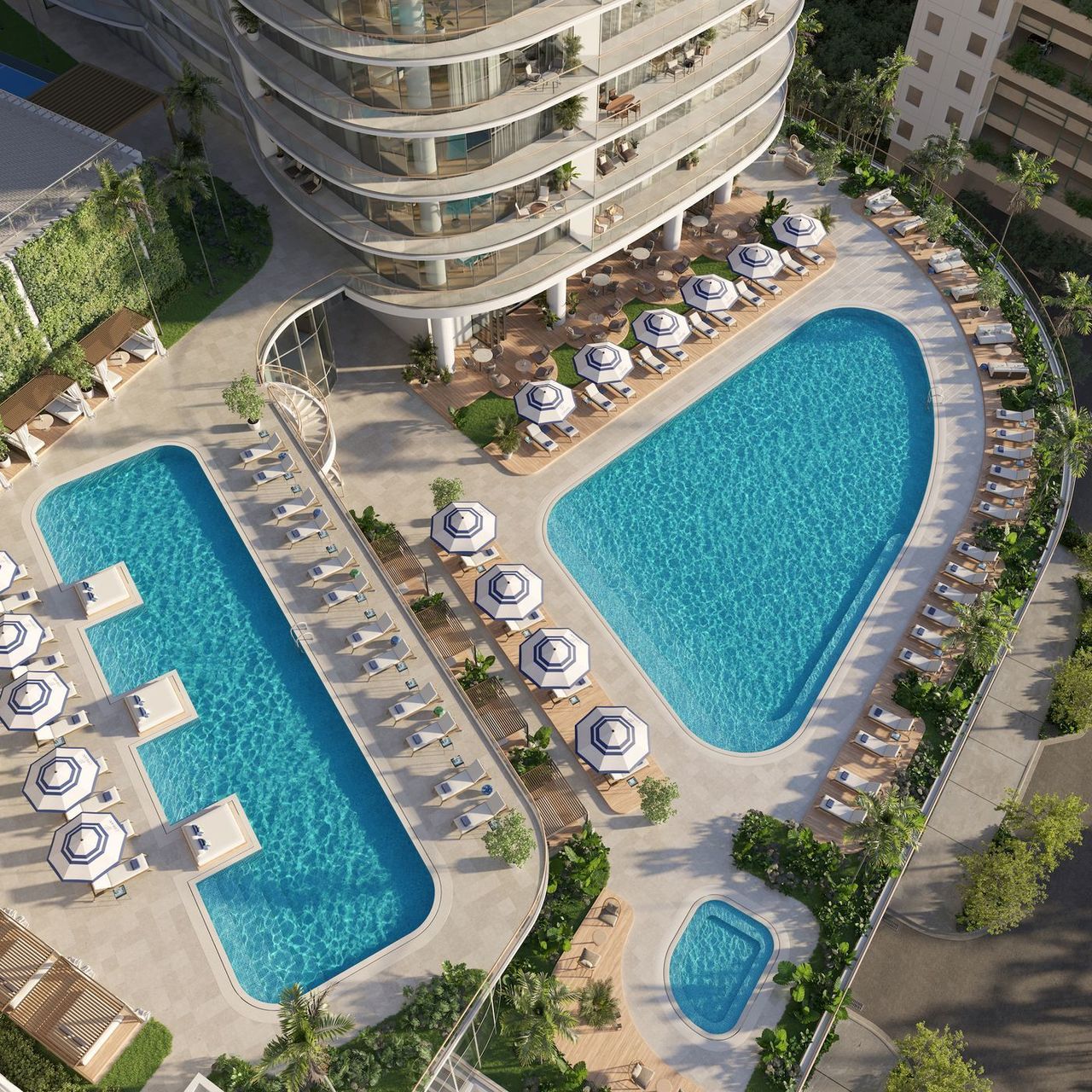
“This is a development that has been designed around the story of wellness, and the three levels of amenities include a rock-climbing wall, two pools plus this cold plunge pool,” he said.
Cipriani Residences Miami, located in the Brickell neighbourhood and slated for completion in 2026, is playing up the ice bath that will be part of its wet room. Michael Patrizio, the managing director for the project’s developer Mast Capital, said that the bath will be between 50 to 55 degrees Fahrenheit and next to the sauna so that residents can move from hot to cold or vice versa setting quickly. “We’re trying to be ahead of the market with what we give our owners, and this bath is definitely a way,” he said.
Picturesque meditation gardens are another fresh perk that developments have at the ready to help buyers find calmness. “Our research has found that a connection with nature is important to home buyers today as a way for them to destress and reconnect with themselves,” said Ms. Arroyo. “Meditation gardens in the wake of this couldn’t be more opportune.”
At 212 West 72nd St., on Manhattan’s Upper West Side, for example, there’s an interior courtyard garden on its third-floor amenity level that’s meant to be used for yoga and meditation. It’s accessible from the fitness centre and features a wooden pergola that’s draped in florals.
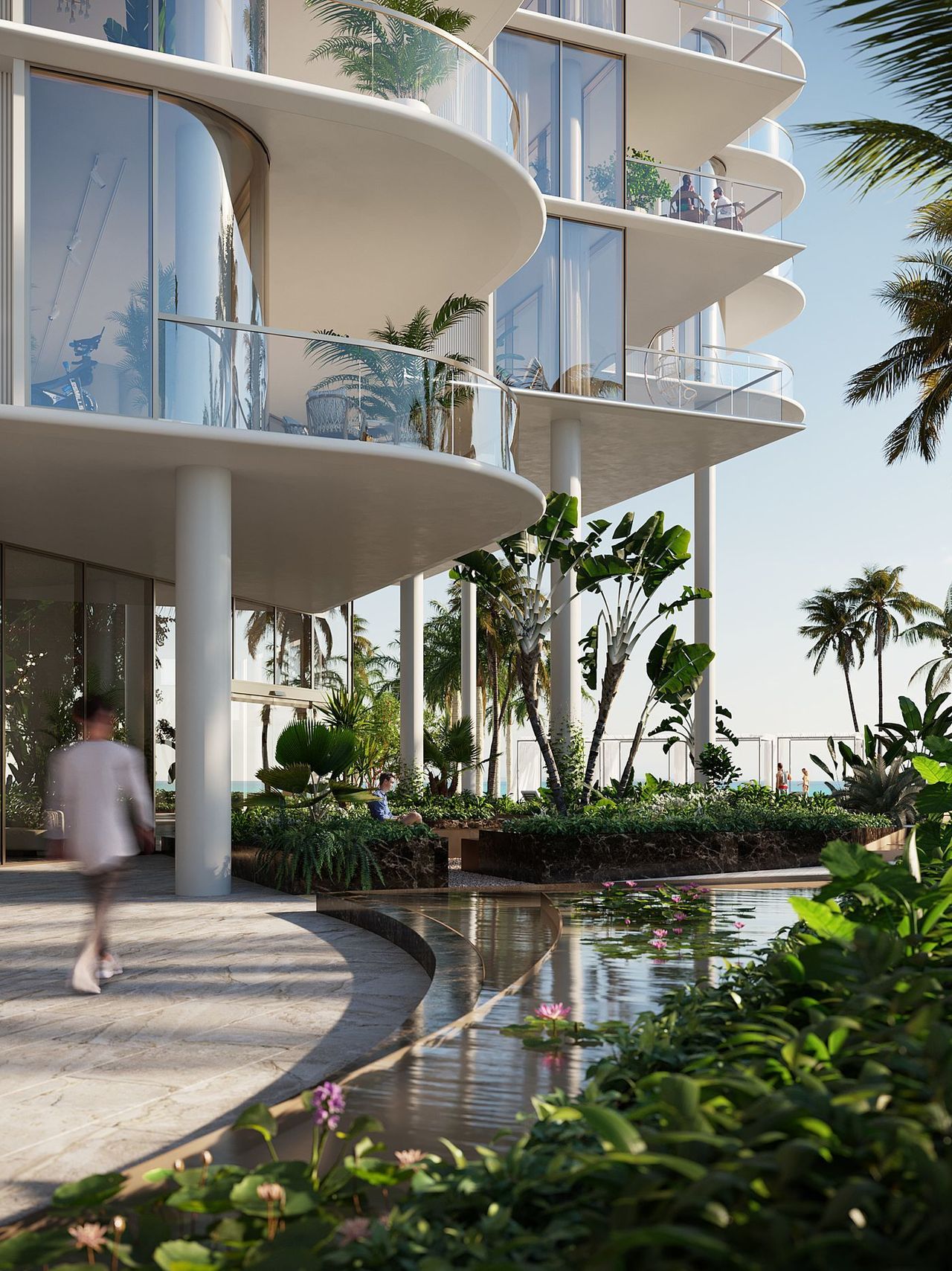
The Perigon, located in Miami Beach and debuting in 2025, is a luxury condominium tower with a meditation garden designed by Gustafson Porter + Bowman, the London landscape architecture firm behind the redesign of the Eiffel Tower’s green spaces and the Princess Diana Memorial Fountain in Hyde Park.
Neil Porter, the architect who led the project, said that his vision was to create a secluded space for owners within the larger gardens that’s away from the activity of the beach. The long, linear area is flanked by a water channel, said Mr. Porter, that has pods constructed of timber which residents can sit on as they self reflect. Other elements include seating alcoves on solid ground and an abundance of lush plants and flowers such as lilies and irises. “The pods resemble floating islands,” Mr. Porter said, “and the garden is meant to be a place for a tranquil escape.”
This article originally appeared on Mansion Global.
 Copyright 2020, Dow Jones & Company, Inc. All Rights Reserved Worldwide. LEARN MORE
Copyright 2020, Dow Jones & Company, Inc. All Rights Reserved Worldwide. LEARN MORE
This stylish family home combines a classic palette and finishes with a flexible floorplan
Just 55 minutes from Sydney, make this your creative getaway located in the majestic Hawkesbury region.
Ahead of the Games, a breakdown of the city’s most desirable places to live
PARIS —Paris has long been a byword for luxurious living. The traditional components of the upscale home, from parquet floors to elaborate moldings, have their origins here. Yet settling down in just the right address in this low-rise, high-density city may be the greatest luxury of all.
Tradition reigns supreme in Paris real estate, where certain conditions seem set in stone—the western half of the city, on either side of the Seine, has long been more expensive than the east. But in the fashion world’s capital, parts of the housing market are also subject to shifting fads. In the trendy, hilly northeast, a roving cool factor can send prices in this year’s hip neighborhood rising, while last year’s might seem like a sudden bargain.
This week, with the opening of the Olympic Games and the eyes of the world turned toward Paris, The Wall Street Journal looks at the most expensive and desirable areas in the City of Light.
The Most Expensive Arrondissement: the 6th
Known for historic architecture, elegant apartment houses and bohemian street cred, the 6th Arrondissement is Paris’s answer to Manhattan’s West Village. Like its New York counterpart, the 6th’s starving-artist days are long behind it. But the charm that first wooed notable residents like Gertrude Stein and Jean-Paul Sartre is still largely intact, attracting high-minded tourists and deep-pocketed homeowners who can afford its once-edgy, now serene atmosphere.
Le Breton George V Notaires, a Paris notary with an international clientele, says the 6th consistently holds the title of most expensive arrondissement among Paris’s 20 administrative districts, and 2023 was no exception. Last year, average home prices reached $1,428 a square foot—almost 30% higher than the Paris average of $1,100 a square foot.
According to Meilleurs Agents, the Paris real estate appraisal company, the 6th is also home to three of the city’s five most expensive streets. Rue de Furstemberg, a secluded loop between Boulevard Saint-Germain and the Seine, comes in on top, with average prices of $2,454 a square foot as of March 2024.
For more than two decades, Kyle Branum, a 51-year-old attorney, and Kimberly Branum, a 60-year-old retired CEO, have been regular visitors to Paris, opting for apartment rentals and ultimately an ownership interest in an apartment in the city’s 7th Arrondissement, a sedate Left Bank district known for its discreet atmosphere and plutocratic residents.
“The 7th was the only place we stayed,” says Kimberly, “but we spent most of our time in the 6th.”
In 2022, inspired by the strength of the dollar, the Branums decided to fulfil a longstanding dream of buying in Paris. Working with Paris Property Group, they opted for a 1,465-square-foot, three-bedroom in a building dating to the 17th century on a side street in the 6th Arrondissement. They paid $2.7 million for the unit and then spent just over $1 million on the renovation, working with Franco-American visual artist Monte Laster, who also does interiors.
The couple, who live in Santa Barbara, Calif., plan to spend about three months a year in Paris, hosting children and grandchildren, and cooking after forays to local food markets. Their new kitchen, which includes a French stove from luxury appliance brand Lacanche, is Kimberly’s favourite room, she says.
Another American, investor Ashley Maddox, 49, is also considering relocating.
In 2012, the longtime Paris resident bought a dingy, overstuffed 1,765-square-foot apartment in the 6th and started from scratch. She paid $2.5 million and undertook a gut renovation and building improvements for about $800,000. A centrepiece of the home now is the one-time salon, which was turned into an open-plan kitchen and dining area where Maddox and her three children tend to hang out, American-style. Just outside her door are some of the city’s best-known bakeries and cheesemongers, and she is a short walk from the Jardin du Luxembourg, the Left Bank’s premier green space.
“A lot of the majesty of the city is accessible from here,” she says. “It’s so central, it’s bananas.” Now that two of her children are going away to school, she has listed the four-bedroom apartment with Varenne for $5 million.
The Most Expensive Neighbourhoods: Notre-Dame and Invalides
Garrow Kedigian is moving up in the world of Parisian real estate by heading south of the Seine.
During the pandemic, the Canada-born, New York-based interior designer reassessed his life, he says, and decided “I’m not going to wait any longer to have a pied-à-terre in Paris.”
He originally selected a 1,130-square-foot one-bedroom in the trendy 9th Arrondissement, an up-and-coming Right Bank district just below Montmartre. But he soon realised it was too small for his extended stays, not to mention hosting guests from out of town.
After paying about $1.6 million in 2022 and then investing about $55,000 in new decor, he put the unit up for sale in early 2024 and went house-shopping a second time. He ended up in the Invalides quarter of the 7th Arrondissement in the shadow of one Paris’s signature monuments, the golden-domed Hôtel des Invalides, which dates to the 17th century and is fronted by a grand esplanade.
His new neighbourhood vies for Paris’s most expensive with the Notre-Dame quarter in the 4th Arrondissement, centred on a few islands in the Seine behind its namesake cathedral. According to Le Breton, home prices in the Notre-Dame neighbourhood were $1,818 a square foot in 2023, followed by $1,568 a square foot in Invalides.
After breaking even on his Right Bank one-bedroom, Kedigian paid $2.4 million for his new 1,450-square-foot two-bedroom in a late 19th-century building. It has southern exposures, rounded living-room windows and “gorgeous floors,” he says. Kedigian, who bought the new flat through Junot Fine Properties/Knight Frank, plans to spend up to $435,000 on a renovation that will involve restoring the original 12-foot ceiling height in many of the rooms, as well as rescuing the ceilings’ elaborate stucco detailing. He expects to finish in 2025.
Over in the Notre-Dame neighbourhood, Belles demeures de France/Christie’s recently sold a 2,370-square-foot, four-bedroom home for close to the asking price of about $8.6 million, or about $3,630 a square foot. Listing agent Marie-Hélène Lundgreen says this places the unit near the very top of Paris luxury real estate, where prime homes typically sell between $2,530 and $4,040 a square foot.
The Most Expensive Suburb: Neuilly-sur-Seine
The Boulevard Périphérique, the 22-mile ring road that surrounds Paris and its 20 arrondissements, was once a line in the sand for Parisians, who regarded the French capital’s numerous suburbs as something to drive through on their way to and from vacation. The past few decades have seen waves of gentrification beyond the city’s borders, upgrading humble or industrial districts to the north and east into prime residential areas. And it has turned Neuilly-sur-Seine, just northwest of the city, into a luxury compound of first resort.
In 2023, Neuilly’s average home price of $1,092 a square foot made the leafy, stately community Paris’s most expensive suburb.
Longtime residents, Alain and Michèle Bigio, decided this year is the right time to list their 7,730-square-foot, four-bedroom townhouse on a gated Neuilly street.
The couple, now in their mid 70s, completed the home in 1990, two years after they purchased a small parcel of garden from the owners next door for an undisclosed amount. Having relocated from a white-marble château outside Paris, the couple echoed their previous home by using white- and cream-coloured stone in the new four-story build. The Bigios, who will relocate just back over the border in the 16th Arrondissement, have listed the property with Emile Garcin Propriétés for $14.7 million.
The couple raised two adult children here and undertook upgrades in their empty-nester years—most recently, an indoor pool in the basement and a new elevator.
The cool, pale interiors give way to dark and sardonic images in the former staff’s quarters in the basement where Alain works on his hobby—surreal and satirical paintings, whose risqué content means that his wife prefers they stay downstairs. “I’m not a painter,” he says. “But I paint.”
The Trendiest Arrondissement: the 9th
French interior designer Julie Hamon is theatre royalty. Her grandfather was playwright Jean Anouilh, a giant of 20th-century French literature, and her sister is actress Gwendoline Hamon. The 52-year-old, who divides her time between Paris and the U.K., still remembers when the city’s 9th Arrondissement, where she and her husband bought their 1,885-square-foot duplex in 2017, was a place to have fun rather than put down roots. Now, the 9th is the place to do both.
The 9th, a largely 19th-century district, is Paris at its most urban. But what it lacks in parks and other green spaces, it makes up with nightlife and a bustling street life. Among Paris’s gentrifying districts, which have been transformed since 2000 from near-slums to the brink of luxury, the 9th has emerged as the clear winner. According to Le Breton, average 2023 home prices here were $1,062 a square foot, while its nearest competitors for the cool crown, the 10th and the 11th, have yet to break $1,011 a square foot.
A co-principal in the Bobo Design Studio, Hamon—whose gut renovation includes a dramatic skylight, a home cinema and air conditioning—still seems surprised at how far her arrondissement has come. “The 9th used to be well known for all the theatres, nightclubs and strip clubs,” she says. “But it was never a place where you wanted to live—now it’s the place to be.”
With their youngest child about to go to college, she and her husband, 52-year-old entrepreneur Guillaume Clignet, decided to list their Paris home for $3.45 million and live in London full-time. Propriétés Parisiennes/Sotheby’s is handling the listing, which has just gone into contract after about six months on the market.
The 9th’s music venues were a draw for 44-year-old American musician and piano dealer, Ronen Segev, who divides his time between Miami and a 1,725-square-foot, two-bedroom in the lower reaches of the arrondissement. Aided by Paris Property Group, Segev purchased the apartment at auction during the pandemic, sight unseen, for $1.69 million. He spent $270,000 on a renovation, knocking down a wall to make a larger salon suitable for home concerts.
During the Olympics, Segev is renting out the space for about $22,850 a week to attendees of the Games. Otherwise, he prefers longer-term sublets to visiting musicians for $32,700 a month.
Most Exclusive Address: Avenue Junot
Hidden in the hilly expanses of the 18th Arrondissement lies a legendary street that, for those in the know, is the city’s most exclusive address. Avenue Junot, a bucolic tree-lined lane, is a fairy-tale version of the city, separate from the gritty bustle that surrounds it.
Homes here rarely come up for sale, and, when they do, they tend to be off-market, or sold before they can be listed. Martine Kuperfis—whose Paris-based Junot Group real-estate company is named for the street—says the most expensive units here are penthouses with views over the whole of the city.
In 2021, her agency sold a 3,230-square-foot triplex apartment, with a 1,400-square-foot terrace, for $8.5 million. At about $2,630 a square foot, that is three times the current average price in the whole of the 18th.
Among its current Junot listings is a 1930s 1,220-square-foot townhouse on the avenue’s cobblestone extension, with an asking price of $2.8 million.
This stylish family home combines a classic palette and finishes with a flexible floorplan
Just 55 minutes from Sydney, make this your creative getaway located in the majestic Hawkesbury region.









